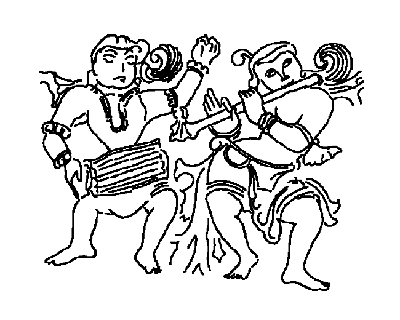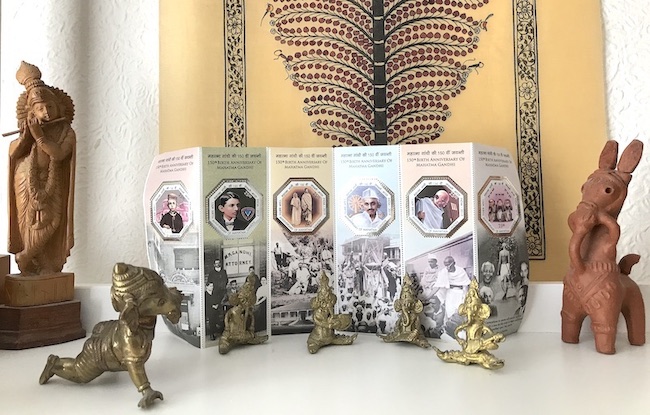The non-sacrificial, musical counterpart to Sāma-Gāna in ancient times was Gandharva-Sangīta, later Sangīta, which has three divisions; vocal, instrumental, and dance. Performed by “Gandharva” musicians in Indra’s heavenly court, earthly Gandharva-Sangīta was a replica of this celestial music. […]
Gandharva-Sangīta was also associated with pūjā, a form of worship with non-Aryan or indigenous roots that eventually replaced the yajña as the cornerstone of Hindu religious life. Instead of oblations into a fire, pūjā involves offerings of flowers, incense, food, water, lamps, and conches directly to deities or symbols on an altar. In pūjā, singing and playing instruments are conceived as offerings that are integrated with the other elements. […]
The association of religion with the production of the arts, while present in Western history, is paramount in India. Currently, the content of artistic production is largely taken from Hindu religious texts, with many performance genres derived from religious rituals. […]

Source: Historian of religions and musicologist Guy L. Beck in Ch. 26, “Hinduism and Music” in The Oxford handbook of religion and the arts
URL: https://www.academia.edu/37849233
Date Visited: 13 November 2021
- For contents, check Worldcat.org: The Oxford handbook of religion and the arts, New York, NY: Oxford University Press, 2014 & Oxford Handbooks Online >>
- Find this and related titles in a library near you >>
I interpret image-worship in two ways, in one form of image-worship, the person who contemplates the image becomes absorbed in the contemplation of the qualities for which it stands. This is image-worship in its wholesome form – in the other form of it, the person who contemplates the image does not think about the qualities but looks upon the image itself as the primary thing.
Gandhi on image worship in Singing Gandhi’s India, p. 78

Mahatma Gandhi used community voices to mobilise people:
Music of the mind and heart >>
Find these and related publications (add “open access” for freely downloadable content) on worldcat.org >>
More about the above person(s) and topics
Periodicals and sites included | More resources | Disclaimer >>
Learn & practice more
- A brief introduction to Carnatic music (with music examples and interactive map)
- Bhava and Rasa explained by V. Premalatha
- Free “flow” exercises on this website
- Glossary (PDF)
- Introduction (values in the light of modernity)
- PDF-Repository
- Video | Keeping tala with hand gestures: Adi (8 beats) & Misra chapu (7 beats)
- Voice culture and singing
- Why Carnatic Music Matters More Than Ever
- Worldcat.org book and journal search (including Open Access)






